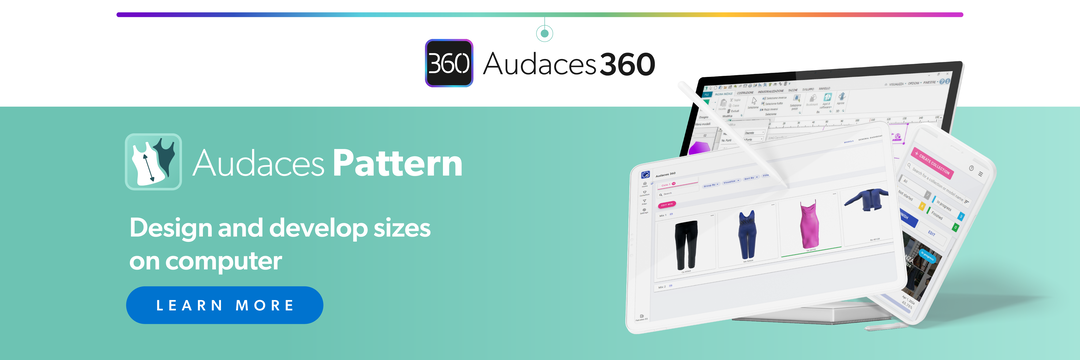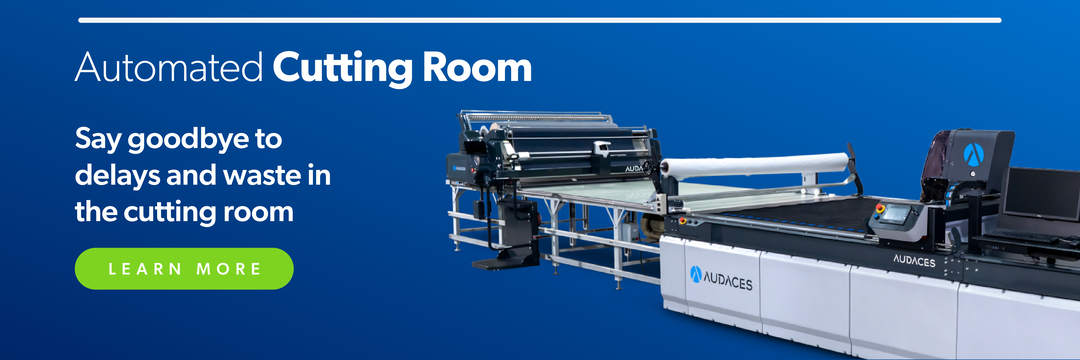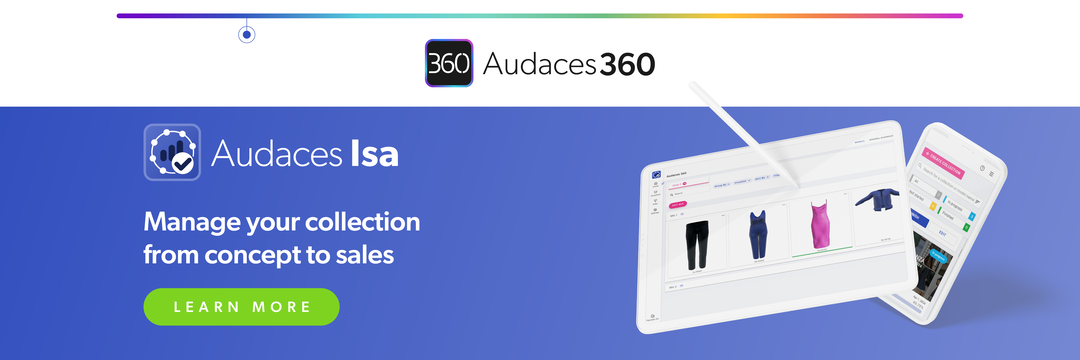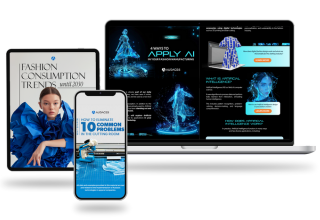Summary
- 3D prototyping is transforming the way pattern makers create and validate designs.
- Explore the real benefits and see how 3D tools work in action to enhance your process.
- Want more industry insights and actionable tips? Subscribe to our newsletter!
Every great garment starts with a pattern, and the tools you use to create it make all the difference. Today, digital technology gives pattern makers the chance to go beyond flat drawings. Now professionals can imagine their creations in motion, in real scale, and with real results.
Instead of relying only on fabric samples and manual adjustments, you can now simulate your designs in 3D. This brings precision to your work while giving you more freedom to experiment with new shapes.
Let’s discover the key advantages of using 3D prototyping in pattern making and how it works in practice.
Get ready to explore a new way of working. Happy reading!
Sumário
What is 3D prototyping in fashion?
3D prototyping is the process of creating virtual samples of garments using digital tools before producing them physically. Instead of cutting multiple fabric samples, pattern makers can visualize how a piece will look on a virtual mannequin.
With computer aided design CAD technology, it’s possible to digitally build and modify garments in precise detail.
The result is a realistic virtual representation that you can analyze, approve, or refine before production begins. By creating high quality prototypes in a digital environment, fashion professionals gain full control over the process.
What’s the difference between visualizing a sketch and simulating a garment in 3D?
A sketch gives you an artistic overview of your design, like colors, silhouettes, and overall style. However, it doesn’t reveal how the garment will actually behave once it’s ready.
When you simulate a piece in 3D, you’re not working from imagination anymore. You’re working with real patterns, measurements, and fabrics that will go to production. This difference makes 3D simulation far more accurate. It highlights proportions, fitting, and possible design flaws that sketches can’t show.
Learn more: Learn what 3D modeling is and its benefits for clothing design and production
6 signs you’re ready to move to 3D prototyping

If you often face challenges in your current workflow, these are signs that you’re ready to move to 3D prototyping:
1) You need to reduce costs and waste
Producing multiple samples, reworking patterns, and using extra fabric all add unnecessary costs to your process.
3D prototyping helps eliminate those inefficiencies by allowing you to test and adjust designs digitally before cutting any fabric. In the long run, it becomes a highly cost-effective approach to product development. You create better garments, faster and with fewer resources.
2) You want to speed up decision-making
When teams rely on physical samples, each round of feedback can take days or even weeks. Waiting for prototypes leads to long lead times that delay the entire collection.
On the other hand, with 3D prototyping decisions happen in real time. The result is a faster time to market, giving your brand a stronger position against competitors.
You can launch collections more frequently, respond to trends quickly, and keep your business moving at the speed fashion demands.
Learn more: Discover 5 major benefits of 3D simulation for fashion
3) You struggle to detect issues before physical production
By simulating your designs digitally, you spot inconsistencies in shape, drape, and proportion long before production starts. This early testing and refinement ensure that what reaches the cutting room is flawless.
You can even test how a garment behaves with different fabrics or a new manufacturing method. It’s a proactive way to ensure quality without adding extra steps to your workflow.
Just imagine how much time and fabric you’re wasting making multiple samples for approval! Discover how to streamline your process with digital prototypes:
4) You need smoother communication between teams and clients
Through 3D modelling software, designers and pattern makers can share virtual samples that look exactly like the final product. Clients no longer need to imagine how the garment will look: they can see it, approve it, and request changes in real time.
This clarity improves every stage of the design process, from concept to approval. It builds stronger alignment, reduces errors, and makes teamwork much more fluid and efficient.
5) You’re looking for more room to customize and innovate
In the digital space, you can test new shapes, textures, and details with complete freedom. This flexibility supports advanced product design experimentation and encourages you to push boundaries safely.
Because digital design tools integrate seamlessly with pattern-making software, turning your ideas into garments becomes easier.
Innovation stops being a risk and starts becoming part of your everyday workflow.
Learn more: 6 benefits of using 3D CAD in your fashion business
6) You want to connect your patterns with automated production
Technology bridges the gap between design and production by creating files that machines can read and execute directly. When your digital patterns connect with cutting machines, you achieve faster, more precise, and fully traceable production.
Learn more: Why simulate the 3D fit of garments before production?
How does 3D prototyping work in practice?
3D prototyping works by transforming your 2D patterns into realistic and interactive 3D garments.
You can import your digital files, apply fabrics, textures, and sewing details, and then see how the garment drapes and fits. The software simulates real-world behavior, so you can check every curve, fold, and seam before cutting any fabric.
You can also start building the pattern directly in 3D. This way, you shape it around the virtual mannequin and refine it as you go.
Now that you know how it works, it’s time to see it in action! Hit play on the video below and watch how Audaces 3D brings digital garments to life.
Can 3D prototyping replace the approval of a physical sample?
The short answer is no. Even with all its precision and accuracy, 3D prototyping doesn’t completely replace the need for a physical sample. Instead, it changes how that approval process works, making it much faster and more efficient.
In traditional methods, teams go back and forth with physical samples multiple times until they reach the perfect fit. Each version takes time and resources to produce, which slows down the collection and increases costs.
With 3D, all the adjustments happen virtually. You can fine-tune proportions, test fabrics, and confirm details digitally before making a single physical prototype. Once the garment fits perfectly in the virtual environment, you produce just one final physical sample for validation.
This approach is a form of rapid prototyping that minimizes rework while maintaining high accuracy and quality. You keep the tactile verification that’s essential in fashion but eliminate the unnecessary steps that delay production.
Learn more: 5 reasons why pattern makers should start using 3D pattern
Can the use of 3D prototyping increase sustainability in fashion?
Yes, absolutely! 3D prototyping is a powerful tool for making fashion production more sustainable.
By reducing the number of physical samples, you drastically cut down fabric consumption and water usage. In addition, companies reduce the carbon footprint associated with shipping materials and samples back and forth.
Because you’re approving patterns digitally, there’s no need to produce several versions to test fit or aesthetics. You can visualize, adjust, and finalize your designs entirely on-screen. It’s a great way of saving resources that would otherwise go to waste.
Learn more: 5 benefits of 3D modeling software in your apparel company
Simulate your finished garments with Audaces 3D

With Audaces 3D, you can virtually test the patterns created in Audaces Pattern. They work together to transform the way your company develops new products.
Make your company more sustainable by ensuring the precision of details, fit, and measurements with digital prototypes.
With this solution, it’s possible to generate rendered images to use in your campaigns. You can integrate them with your e-commerce, elevating the customer experience.
Discover Audaces360 and unlock a world of possibilities for fashion design and production. Explore our comprehensive suite of solutions today!
FAQ
3D prototyping is the process of creating virtual samples of garments using digital tools before producing them physically.
3D prototyping works by transforming your 2D patterns into realistic and interactive 3D garments. You can import your digital files, apply fabrics, textures, and sewing details, and then see how the garment drapes and fits.
Yes, absolutely! 3D prototyping is a powerful tool for making fashion production more sustainable. By reducing the number of physical samples, you drastically cut down fabric consumption and water usage.










